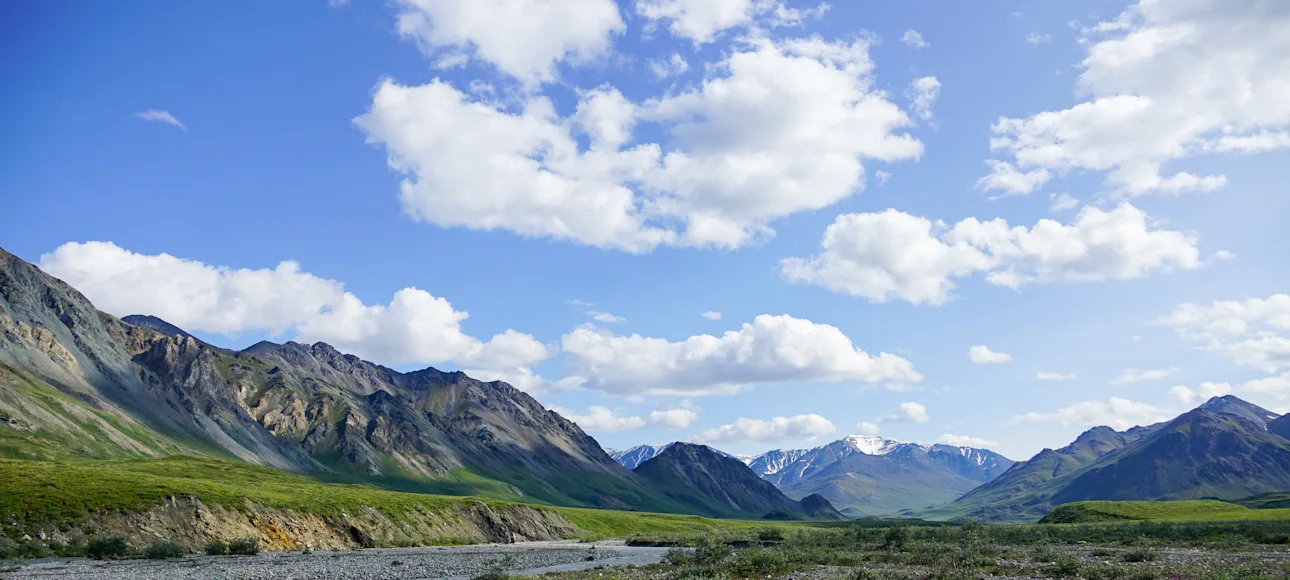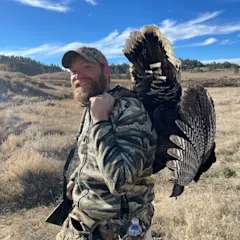The House of Representatives is expected to vote on the federal budget bill any day now. Though hunters and anglers have been celebrating the removal of Utah Sen. Mike Lee’s public land sell-off provision, conservationists are still deeply concerned about language in the bill that will mandate oil and gas drilling in Alaska's Arctic National Wildlife Refuge.
Part of the US Fish & Wildlife Refuge system, the Arctic National Wildlife Refuge stretches for 200 miles from the Arctic Ocean into the Brooks Range and the boreal forest of the Yukon River basin. “These lands and waters are home to some of the most diverse and spectacular fish and wildlife in the arctic, from polar bears to caribou, Dall sheep, muskox, salmon-sized Dolly Varden char, and Arctic Grayling,” the USFWS states on its website. “Birds from all over the world come here to breed, feed, and rear their young. Conserving these populations and their habitats in their natural diversity is a purpose of the refuge."
The Arctic National Wildlife Refuge is managed for hunting and fishing opportunities for residents, non-residents, and native subsistence hunters. While caribou are the primary draw for big-game hunters, there are great opportunities for waterfowl, dall sheep, and grizzly bears as well. The refuge supports 36 species of fish, but anglers typically pursue its Dolly Varden, arctic char, and arctic grayling.
In a recent episode of Field & Stream’s new podcast, Legends of the Wild, host Sam Soholt interviewed Meateater Conservation Director and Backcountry Hunters and Anglers Board Chair Ryan Callaghan about a recent trip to the refuge. “It exceeded all of my expectations,” Callaghan said. “I was so blown away, seeing it for the first time. But in the back of my mind I knew this could be the last time anyone sees it in its natural state.”
Section 50104 in the budget bill mandates four oil and gas lease sales on land within the boundaries of the Arctic National Wildlife Refuge within 10 years. Each of those lease sales must be at least 400,000 acres in size, and the bill requires that at least one lease sale be held no less than one year after passage of the budget. The lease sales would be administered under the terms and conditions of a 2020 leasing plan that conservationists say provides few safeguards for wildlife, subsistence, or the environment.
During President Trump’s first term, Congress mandated two oil and gas lease sales in the Arctic National Wildlife Refuge as part of a budget reconciliation package known as the Tax Cuts and Jobs Act. Both of those lease sales failed, however, according to the non-partisan non-profit Taxpayers for Common Sense.
“Federal lease sales in the Arctic Refuge have not and will not be a credible fiscal offset for budget reconciliation for the foreseeable future,” the non-profit wrote in a recent blog post about the economic feasibility of mandated drilling in the Arctic National Wildlife Refuge. “ For the program to generate meaningful revenue, it would require far higher bids than have been seen on nearby federal and state lands in the past two decades. Moreover, drilling in [the refuge] carries serious ecological and economic risks. The region is home to sensitive and irreplaceable wildlife habitats—including calving grounds for caribou, nesting sites for migratory birds, and waters supporting Arctic char and Dolly Varden trout—all of which underpin Alaska’s outdoor recreation industry.”
Proponents argue that mandating drilling in the refuge via the federal budget bill would generate nearly $1 billion over the next ten years. They say drilling projects would provide local jobs and decrease US reliance on foreign oil.
But a new poll released by Taxpayers for Common Sense and Backcountry Hunters & Anglers indicates strong bi-partisan support for protecting northern Alaska from costly oil and gas drilling. It shows that 57 percent of all swing district voters support policies to protect America's Arctic from new oil and gas development, compared to just 32 percent who oppose protections. And 52 percent of polled voters said: "We should prioritize energy production outside Alaska's Arctic region, in other areas where it is easier to access and cheaper to produce."
ANWR was set aside as a National Wildlife Refuge in 1960 by President Dwight D. Eisenhower, but the first oil and gas lease sale wasn't held there until 2021. It generated just 16.5 million—less than 1 percent of what the Congressional Budget Office (CBO) anticipated, Taxpayers for Common Sense reports. The second mandated lease sale, held in January 2025, “attracted no bidders and generated no revenue." No drilling ultimately took place because the winning parties from the 2021 sale relinquished their leases before ever breaking ground.
It's also important to note that a separate provision in the current budget bill would reduce the cost of royalty fees that oil and gas companies would have to pay when drilling on the Arctic National Wildlife Refuge and other federally managed public lands across the country. “Royalty rates would be reduced from 16.7% to 12.5%,” wrote the National Wildlife Federation in a June 16 blog post that outlines details of the bill. “That’s well below the rate that most states charge oil and gas companies and would mean a significant decrease of money that could be used to help balance the budget. It would also reduce money to states because royalties are split between the states and federal government.”
According to prominent conservationist and Fresh Tracks host Randy Newberg, mandated drilling in the Arctic and large reductions in oil and gas royalties are bargaining chips that certain elected officials can use to pay off political debts. “All of these things are an expression of how little regard some people have for our public lands and the resources found on our public lands,” Newberg tells Field & Stream. “This really isn’t even something that the oil and gas industry is asking for. It’s all about performative politics and gaining talking points. They’re virtue signaling with our public lands and resources.”
Read Next: Trump Administration to Revoke Roadless Rule Protections on 58 Million Acres of Public Land
The Senate passed its version of the budget bill on July 1. If the House votes to pass it, it could end up on the President's desk by Independence Day. According to The Hill, there were 20 House Republicans who opposed certain provisions in the Senate’s version as of late Tuesday night. If you'd like to contact your representatives about mandated drilling the Arctic National Wildlife Refuge, call the Capitol Switchboard number: 202-224-3121


